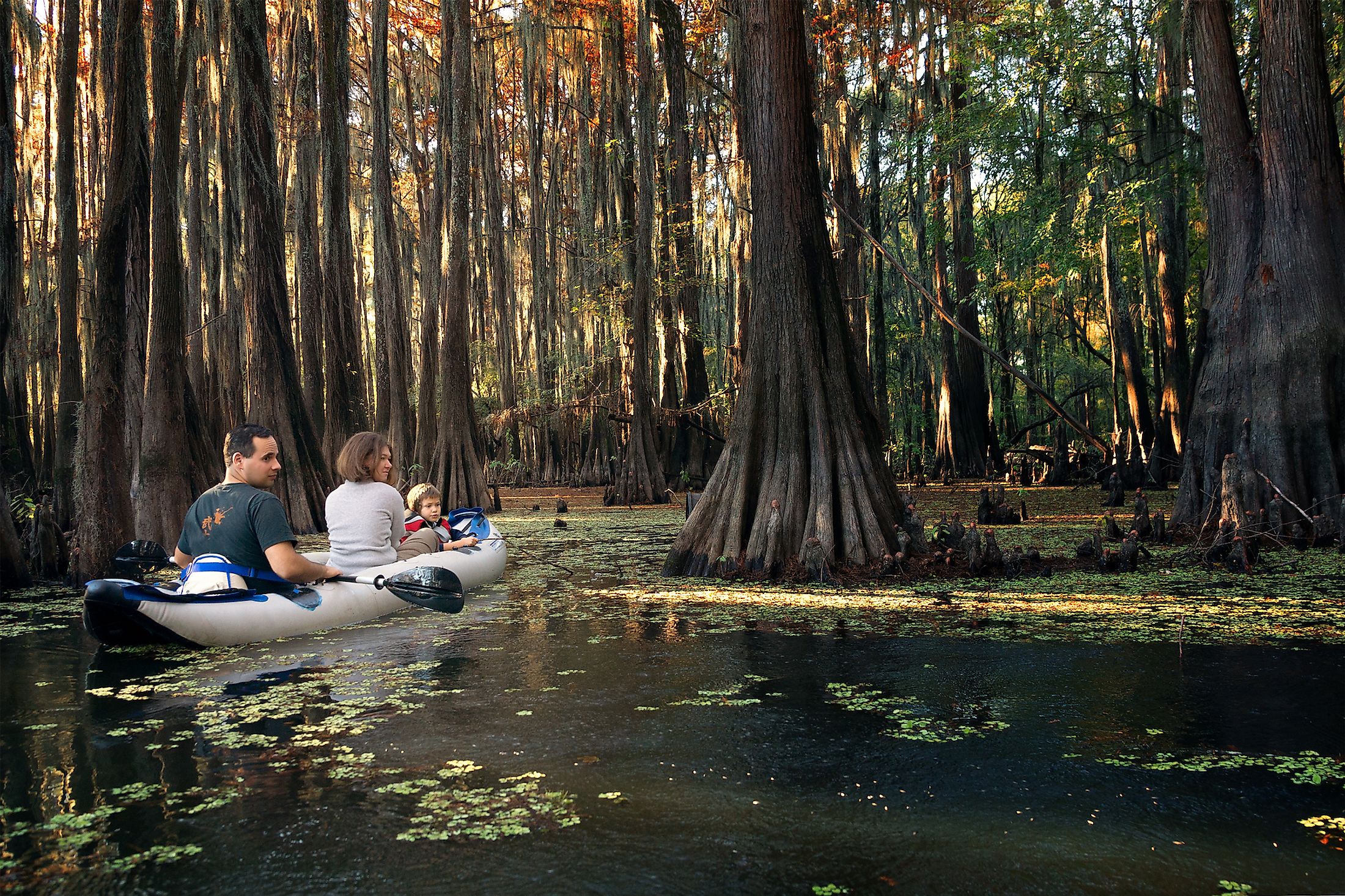
Caddo Lake
Straddling the Texas-Louisiana boundary, the Caddo Lake State Park is home to Texas’ largest naturally formed lake and the world’s largest cypress forest. The Caddo Lake, named after Native Americans, known as Caddo Indians, spans 10,300 hectares and has varying depths between 8 and 20 feet. The shallow bayou is a Ramsar-protected wetland and was the largest lake in the Southern US before the construction of the Caddo Dam. Caddo is characterized by slow-moving current, abundant wildlife, and towering cypress trees, making it a popular destination in the South. The lake’s shore contains many towns and ghost towns, with the lake itself appearing in several local legends.
Formation
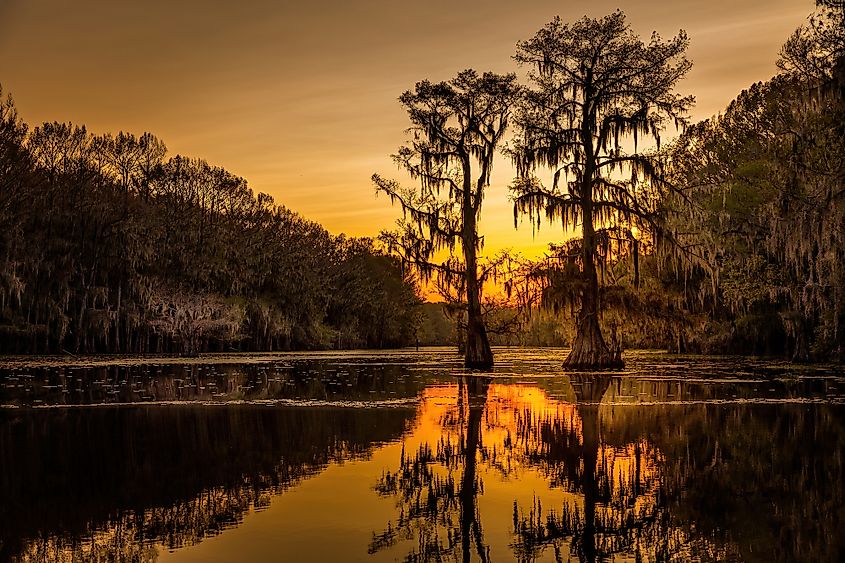
Several legends exist about Caddo Lake’s formation. According to a popular Caddo legend, the New Madrid earthquakes of 1811-12 were responsible for the lake’s formation. The earthquakes came about as a punishment for the Caddo Chief’s disobedience to the Great Spirits. However, scientists believe the Great Raft in the Red River was responsible for the lake’s formation. Before the European arrival, the Red River had a 190-kilometer log jam known as the Great Raft. The log jam raised the river bank and created several tributaries and lakes on the lower part. Although most of the lakes have disappeared, Wallace, Cross, Black Bayou, Bistineau, and Caddo Lakes, collectively referred to as the Great Raft Lakes, were preserved by dam construction.
Brief History
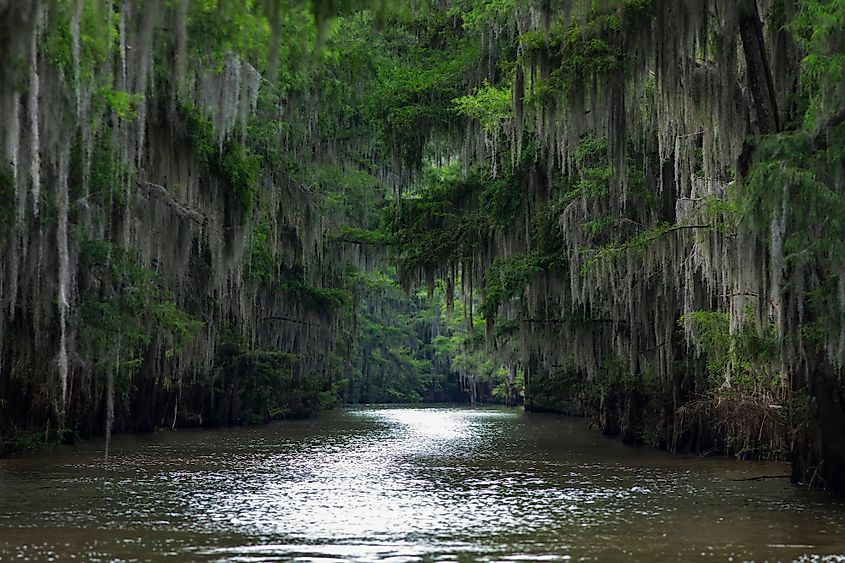
People have inhabited the lake region for over 10,000 years. The first people to settle there were the Native Americans known as Caddo Indians, with their villages around the lake discovered in 1540 by Desoto, a Spanish explorer. The native tribes were known for their mound culture, pottery, cypress tree canoes, and bow and arrows. However, the European arrival, mainly the French and Spanish, drove the natives away from the lake, with most of them settling in Oklahoma, where they are federally recognized.
The commercial development on Caddo Lake began with Texas and Louisiana annexation and steamboat invention in the 19th century. Several cities, including Mooringsport (Louisiana), Jefferson, Swanson’s Landing, and Port Caddo in Texas, had paddle steamer ports on the lake. An overwater offshore platform was constructed in the lake in 1911 by the Gulf Refining Company and produced 72 cubic meters of oil daily. However, the oil industry damaged the lake’s fragile ecosystem. In 1934, Texas designated the lake a protected area under Caddo Lake State Park.
Wildlife
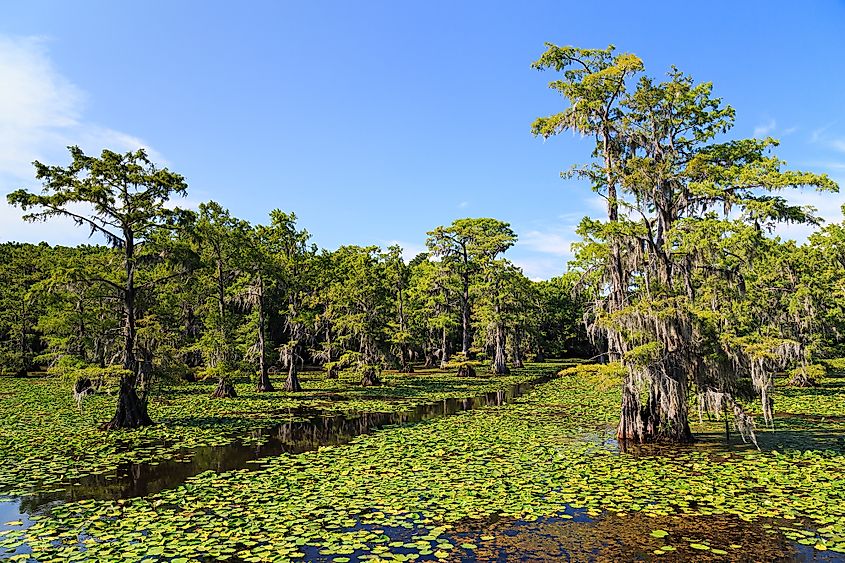
The Caddo Lake is a natural treasure containing diverse plants and animals. The lake region is home to over 185 tree and shrub species, 40 woody vines, and 70 grass species. The upland forest contains several species, including hickory, oak, and pine, of which some were used for the park’s construction. The bottomland hardwood forest contains water tupelo swamp and bald cypress trees.
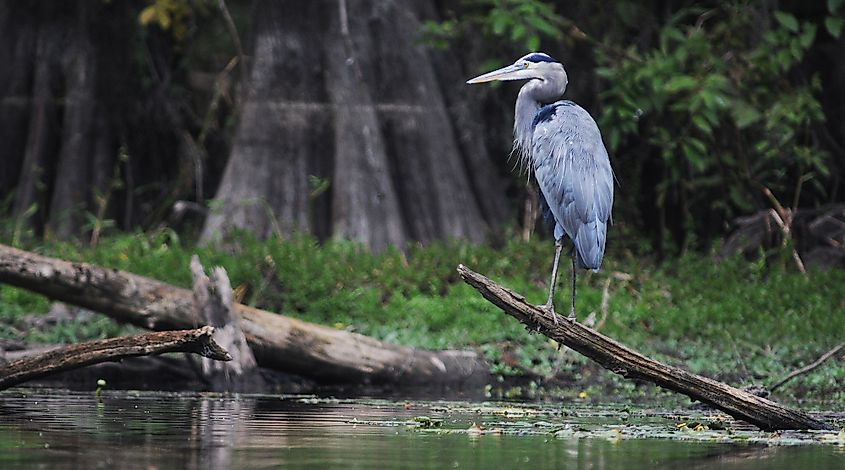
The freshwater marshes, reeds, and grasses are home to various species of fish, turtles, snakes, toads, alligators, and birds. Caddo is home to over 70 fish species, including the bluegill, chain pickerel, white bass, and largemouth. Some of the birds common in the area include wood duck, pileated woodpecker, brown-headed nuthatch, indigo bunting, blue heron, and bald eagle. Reptiles include the American alligator, eastern newt, spiney soft-shelled turtle, and five-lined skink.











